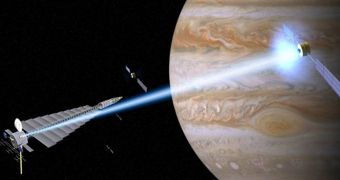NASA’s Institute for Advanced Concepts (NIAC) was at its time one of the best places to be, if you were an expert concerned with resolving space-related problems. Originally thought of as a means of scientists working together towards innovating the way we look at space travel, over time, the center became a place where long-term ideas took form, ideas that stretched two or three generations. With its budget limited, and a tendency to focus on short-term efforts that pay off immediately, NASA decided to close down the institute in 2007. Now, a panel recommends it is reopened.
Though not binding, this recommendation is a huge step forward for bringing NIAC back. Developed and supported by NASA since its beginning in 1998, it played a huge role in creating a “leapfrog” effect within the agency, as in to develop proposals for revolutionary aeronautics and space concepts that would circumvent existing progress on current technologies. In other words, it was meant to bring forth massive innovation, and plans that would be made possible within 10 to 40 years. However, as NASA's Vision on Space Exploration needed to be completed, the $4 million budget of the NIAC proved unsustainable, and the space agency had to take the difficult decision of shutting it down.
The institute was expected to supply the agency with projects that stretched imagination, and that's a fact. However, it was supposed to found these projects on sound scientific principles that could be translated into practice within a generation. It was compared to the Defense Advanced Research Projects Agency (DARPA) in terms of the seemingly-crazy ideas that came out of it. The most groundbreaking proposals that NIAC developed over the decade it functioned include:
1. Bio-Nano-Machines for Space Applications 2. System Feasibility Demonstrations of Caves and Subsurface Constructs for Mars Habitation and Scientific Exploration (Caves of Mars Project) 3. Lunar space elevator 4. Magnetic sail (making use of charged particles from the Sun for propulsion) 5. Mini-magnetospheric plasma propulsion 6. New Worlds Mission (building a large shield to block light, so that faint stars can be seen) 7. Space elevator 8. Mars Entomopter (a flying/crawling device that could have collected soil samples).
Some of these proposals will most likely find applications in future NASA technologies. For example, the New Worlds Mission has directly inspired the light shield that will be constructed on the new James Webb Space Telescope (JWST). The craft will be launched in the L2 orbital point, some 1.5 million kilometers away from the Earth, and will have a built-in shading device, which will prevent light from the Sun, the Earth or the Moon entering its mirrors.
The new recommendation to open the institute again came from a panel of experts reunited by the National Academy of Sciences. The group believes that NASA could still benefit from the visionary thinking NIAC was capable of. Although the decision is not binding for the space agency, hopes are high that these recommendations will be followed, and that the Institute will be reopened, Wired informs.

 14 DAY TRIAL //
14 DAY TRIAL //